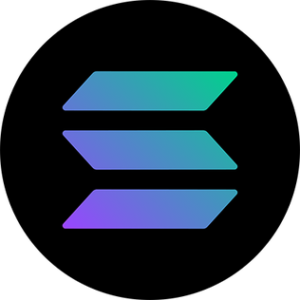Crypto futures trading is no longer just for expert investors. In 2025, it has become one of the most used strategies for both professional and retail traders.
With the rise of platforms like Binance, Bybit, and OKX, anyone can open a futures position within minutes.
The key benefit? You can make money whether prices go up or down. But that opportunity comes with high risk — and understanding margin is essential before jumping in. If you understand how futures and margin work together, you’ll have better control over profits, losses, and your trading strategy.
Let’s begin with the foundation: what exactly are crypto futures?
What Are Crypto Futures?
Crypto futures are contracts that let traders buy or sell a cryptocurrency at a predetermined price at a specific time in the future. These contracts don’t involve direct ownership of the coin. Instead, you’re betting on the future price movement.
For example, if Bitcoin is currently trading at $60,000 and you believe it will rise to $70,000, you can enter a long futures contract. If you’re right, you make a profit when BTC rises. If you’re wrong and BTC drops, you lose.
There are two common types:
-
Perpetual Futures: These don’t have an expiry date and are the most traded contracts.
-
Standard Futures: These have a fixed expiry and settle automatically.
Futures give you flexibility to trade both directions — long (buy) or short (sell). This makes them useful in volatile markets when prices jump or crash fast.
What Is “Margin” in Simple Words?
Margin is like a security deposit or collateral you need to open a trade. You don’t need to pay the full price of your position — just a portion.
Let’s say you want to enter a $10,000 BTC futures trade. Instead of paying $10,000, you might only need to deposit $500 if using 20x leverage. That $500 is your margin.
There are two main types of margin:
-
Initial Margin: The amount you need to start the trade.
-
Maintenance Margin: The minimum balance you must keep to avoid liquidation.
If your trade goes in the wrong direction and your balance drops below the maintenance margin, your position gets liquidated and you lose your margin. That’s why margin trading is powerful — but also dangerous if not handled with care.
Why Margin Is Important in Futures Trading
Margin unlocks leverage, which multiplies your trading power. It allows traders with limited funds to open large positions and potentially earn bigger profits.
Imagine two traders:
-
Trader A has $100 and does spot trading. He can only buy $100 worth of ETH.
-
Trader B has $100 but uses 10x leverage in futures. He can trade $1,000 worth of ETH.
If ETH price rises 5%, Trader A earns $5. But Trader B earns $50 — 10x more.
However, if ETH drops by 5%, Trader B also loses $50. If the drop is bigger, the exchange may liquidate the position, and Trader B can lose the entire $100.
So margin gives you speed, flexibility, and opportunity — but demands responsibility. Without proper risk tools like stop-loss or position sizing, margin can hurt more than it helps.
Who Should Use Margin and Who Should Avoid It?
Experienced traders with proper knowledge of risk management, technical analysis, and market structure can benefit from margin. These traders:
-
Use stop-loss and take-profit levels.
-
Don’t over-leverage.
-
Know how much they can afford to lose.
-
Trade with discipline, not emotions.
New traders should avoid using margin at the start. It’s tempting to double your money fast — but crypto moves unpredictably, and one wrong bet can burn your account.
Many beginners jump into high-leverage trades like 50x or 100x after watching influencers. They see big wins on YouTube or Twitter, but not the losses. In reality, over 70% of new margin traders lose money due to poor strategy.
If you’re new, focus on learning the basics first. Trade with small amounts. Once you build experience and confidence, then slowly explore margin — with clear rules and limits.
How Margin Works in Crypto Futures
Margin in crypto futures allows you to control large trades with just a small portion of your own capital. This is possible through leverage, which multiplies your buying power. While this can lead to much higher profits, it also increases your risk of getting liquidated if the market moves against your trade.
Understanding how margin, leverage, and liquidation work is crucial before jumping into futures trading. Let’s explore this with real numbers based on today’s market price.
Example: Trading with Margin Using $50
Let’s say you have $50 in your futures account. You select 20x leverage, which gives you the ability to open a $1,000 trade.
Now, assume Bitcoin’s current price is $103,815.
✅ Scenario: Price Increases by 5%
-
New price: $109,005
-
Position gain: 5% of $1,000 = $50 profit
-
Your balance becomes $100 total (initial margin + profit)
❌ Scenario: Price Drops by 5%
-
New price: $98,624
-
Position loss: 5% of $1,000 = $50 loss
-
You lose your entire margin and your position is liquidated
This clearly shows how leverage boosts both your reward and your risk. Just a small move in the price can double your money or completely wipe it out.
How Exchanges Let You Borrow More Money
Crypto exchanges like Binance, Bybit, and OKX allow you to borrow virtually through leverage. When you choose a leverage level, the exchange calculates your required margin and lets you control a bigger trade size.
For example:
-
You use 10x leverage and have $100 margin
-
You can now trade up to $1,000
-
The exchange provides the extra $900 in value temporarily
If your position loses value and your equity drops too low, the exchange will automatically close the position. This protects them from losing the funds they lent you via leverage.
That’s why margin is not free — it’s a powerful tool with strict rules.
What Is Initial Margin and Why It Matters
Initial margin is the deposit you must make to open a leveraged position. It’s based on the total value of the trade and your selected leverage.
Example:
-
Desired trade size: $2,000
-
Leverage: 20x
-
Required initial margin: $2,000 ÷ 20 = $100
This $100 is what you risk. If your position goes into profit, you keep gaining. If the market turns against you, this margin shrinks fast.
Initial margin gives you the entry ticket to the trade, but how you manage the position after that decides whether you earn or lose.
What Is Maintenance Margin and When It Triggers Liquidation
Maintenance margin is the minimum amount you must maintain to keep your position open. If your losses bring your balance below this threshold, the exchange will close your position — this is called liquidation.
Example:
-
Position size: $1,000
-
Initial margin: $50
-
Maintenance margin requirement: 0.5% of $1,000 = $5
If your equity drops below $5, the exchange liquidates the trade to prevent further losses. In most cases, this means you lose your full $50 margin.
This is why checking your liquidation price before opening a trade is essential. Smart traders always use stop-losses to exit before reaching that point.
Types of Margin in Futures Trading
In crypto futures, there are two main types of margin systems: Isolated Margin and Cross Margin. These define how your funds are used when you’re opening trades and how losses are covered if the market moves against you.
Choosing the right type of margin is important because it affects your risk, especially if you’re managing multiple trades at once. Both types have their advantages, but beginners usually prefer one over the other based on control and safety.
Isolated Margin — Risk Only in That One Trade
With Isolated Margin, the money you put into a trade is completely separated from the rest of your wallet balance. That means if the trade goes bad, only the margin in that single position is at risk — not your full account.
This gives you more control and helps limit the damage if the market moves against you. You can manage each trade independently without affecting others.
Example:
-
You open a BTC/USDT long position at $103,815
-
You use $100 margin in isolated mode
-
Market drops and your position is liquidated
-
You lose only that $100, and the rest of your wallet stays safe
That’s why many beginners choose isolated margin. It offers a clear “risk boundary” — you always know the maximum you can lose per trade.
Cross Margin — Uses Your Whole Wallet to Cover Losses
With Cross Margin, your entire futures wallet balance is used to protect your open trades. If one trade starts losing, the platform automatically pulls funds from your wallet to keep it alive — unless you manually close it or get liquidated.
This method gives your trades more breathing room, but it also exposes more of your funds to risk.
Example:
-
You open a BTC/USDT short position at $103,815
-
You use $100 margin, but your wallet has $900 more
-
If the trade loses value, the exchange pulls from that $900 to prevent liquidation
-
If the market keeps going against you, you could lose more than just $100
Cross margin can be useful for experienced traders who manage positions actively and don’t mind sharing risk across trades. But it can be dangerous if you’re not watching closely.
Which One Is Safer for Beginners?
Isolated Margin is safer for beginners — plain and simple.
It limits your risk to only what you put into that trade. You don’t have to worry about one bad trade wiping out your entire balance. You can make mistakes, learn, and still have capital left to recover or try again.
Cross Margin is powerful, but it requires strong risk control, constant monitoring, and experience. One wrong move in cross mode can drain your whole wallet.
So if you’re starting out, stick with isolated until you’re confident in managing multiple trades, using stop-loss orders, and handling volatility.
Margin and Leverage: What’s the Connection?
Margin and leverage are two sides of the same coin in futures trading. Margin is the actual amount of money you commit to a trade. Leverage multiplies that money, giving you access to a larger position than your actual balance.
Together, they give you the power to open big trades using small funds. But this also brings high volatility and higher risk. If you’re trading without understanding the relationship between these two, you’re gambling — not trading.
How Margin Gives You More Buying Power
When you trade with margin, you don’t need to put down the full value of a position. You just need to provide a fraction of it — called initial margin — and the rest is “borrowed” through leverage.
For example:
-
You want to open a $1,000 BTC/USDT long trade
-
The exchange allows 10x leverage
-
You only need $100 margin
-
Exchange gives you control over $1,000 worth of BTC
This increases your buying power 10 times. But remember — the full $1,000 trade value moves with the market, not just your $100. A small price move affects your entire position, and that’s where the risk comes in.
10x, 50x, 100x: What Does It Mean with Margin?
Leverage ratios (like 10x, 50x, 100x) define how many times your margin is multiplied. The higher the leverage, the less margin you need — but the higher your liquidation risk.
Let’s look at what each level means:
-
10x leverage: $100 margin = $1,000 position
-
50x leverage: $100 margin = $5,000 position
-
100x leverage: $100 margin = $10,000 position
Now apply that to Bitcoin’s current price: $103,815.
Imagine you’re using just $100 margin:
-
With 10x, you control 0.0096 BTC
-
With 50x, you control 0.0481 BTC
-
With 100x, you control 0.0963 BTC
Even a 1% move in price ($1,038) will cause:
-
$10 profit/loss at 10x
-
$50 at 50x
-
$100 at 100x — complete liquidation
This shows how dangerous high leverage becomes with small margin. You’re putting yourself one step away from being wiped out.
How Leverage Increases Risk with Small Margin
Leverage increases both your potential reward and potential loss. It doesn’t change the market — it just changes how deeply you’re affected by each price movement.
With small margin and high leverage, even a tiny price fluctuation can liquidate your trade. That’s because your margin is acting like a shield — and if the loss breaks through that shield, your trade is auto-closed.
Example:
-
You open a $1,000 trade with $20 margin (50x leverage)
-
If BTC drops just 2%, you lose $20, and your trade is liquidated
-
You’re out — and you never got a chance to recover
That’s why most beginners lose money in high-leverage trading. They don’t realize how fast the market can move and how quickly margin can disappear.
Safe Leverage Levels for New Traders
If you’re new, start with low leverage. The safest range for beginners is usually between:
-
2x to 5x leverage — gives you some exposure without high risk
-
10x maximum — only if you’ve tested stop-losses and understand liquidation levels
Using lower leverage allows you to:
-
Set wider stop-losses
-
Stay in the trade longer without being liquidated
-
Learn from market behavior without losing all your funds
High leverage (20x, 50x, 100x) should only be used when you fully understand the market, have a tested strategy, and can monitor trades closely.
Remember: In futures, capital protection is more important than profit chasing. Without money in your wallet, there’s no second chance.
Liquidation: The Biggest Margin Risk
Liquidation is the most dangerous part of margin trading — and it happens fast. When your position starts losing value and your remaining margin is too small to cover the loss, the exchange forcefully closes your trade to protect its loaned funds. That’s called liquidation.
It doesn’t matter if you were confident in your trade. If your margin drops below the required maintenance level, the system won’t wait — your trade will be shut down instantly, and you’ll lose the margin amount you put in.
Understanding liquidation is crucial because it’s how most new traders lose their money in futures.
What Does Liquidation Mean?
Liquidation means your position has lost so much value that your margin can no longer support it. The exchange ends the trade automatically, and your margin is taken as a loss.
This is not like a stop-loss you set yourself. This is forced closure by the platform, and it happens without asking you. You don’t get time to fix or react once liquidation begins.
The purpose is simple: the exchange protects its borrowed capital. It gave you 10x, 20x, or 100x leverage — and it won’t risk losing money beyond your margin.
How Exchanges Close Your Trade If Margin Is Too Low
Every exchange has a system that constantly monitors your margin balance. If the market moves against your trade and your equity drops near or below the maintenance margin, the system triggers an auto-close.
Let’s say your maintenance margin requirement is $5.
-
If your account equity goes down to $5 or less, the exchange liquidates your trade
-
You lose your entire initial margin (like $50 or $100)
-
If the loss is extreme and balance goes negative, some exchanges may deduct it from your wallet (unless protection is active)
Most platforms today, like Binance and Bybit, use real-time liquidation engines. They even send a warning (“Margin Call”) before liquidation hits — but many beginners don’t act fast enough.
What Is a Liquidation Price and How to Check It
Liquidation price is the exact price at which your trade will be closed if the market moves against you.
It depends on:
-
Your entry price
-
The leverage you use
-
Your initial margin
-
And sometimes your wallet balance (in cross margin)
When you open a trade, the platform automatically calculates and shows your liquidation price. You can see it inside the “Positions” tab. This price helps you plan your stop-loss, add more margin, or decide whether to close early.
The closer your trade gets to liquidation price, the higher the danger.
Example: When Margin Drops and Trade Auto-Closes
Let’s say:
-
You open a BTC/USDT long at $103,815
-
You use $100 margin with 20x leverage → total trade size = $2,000
If BTC drops by just 5%:
-
Your position falls to $1,900
-
That’s a $100 loss — your full margin
-
Your equity hits zero → Trade is liquidated
Now, your trade closes automatically. You can’t stop it once it begins. You lose your $100, and the trade is gone. This is why traders constantly monitor liquidation prices, set stop-losses, and avoid over-leveraging.
How to Use Margin Safely
Margin trading can help you grow your profits fast — but it can also burn your account just as quickly if you’re careless. Most losses in crypto futures happen not because traders had bad ideas, but because they used margin the wrong way.
Using margin safely is about discipline, risk control, and knowing your limits. You don’t need to avoid leverage altogether — you just need to use it wisely. These four tips can help you trade smart and stay in the game longer.
Start Small with 2x–5x Leverage
If you’re new to futures trading, start with low leverage. The safest range for beginners is between 2x and 5x. This means for every $1 you use, your trade size is $2 to $5 — not $20 or $100 like in high leverage.
With low leverage:
-
Your trade won’t liquidate quickly on small price moves
-
You get time to react, adjust, or close manually
-
You can set wider stop-losses and survive market swings
Example:
You use $100 margin with 5x leverage → trade size = $500
Even a 3–4% move won’t liquidate you instantly, unlike 50x or 100x, where 1% can wipe you out.
Trading with low leverage means learning without losing everything.
Always Set Stop-Loss and Take-Profit
Never enter a trade without a stop-loss. It’s your safety net if things go wrong. A stop-loss closes your trade automatically at a fixed loss level — before you hit liquidation.
Setting a take-profit is also important. It locks your gains at a certain target without needing to sit in front of the screen all day.
Why this matters:
-
It keeps emotions out of your trades
-
It protects your account balance
-
It helps you follow a clear plan, not guesswork
Example:
You open a trade at BTC $103,815, aiming to sell at $106,000.
You set stop-loss at $102,000 and take-profit at $106,000.
Now your trade has a clear direction — risk and reward are both defined.
Don’t Use Full Wallet Balance
One of the worst mistakes beginners make is putting their entire futures wallet into a single trade. If that trade fails, everything is gone — you can’t recover, average down, or try again.
Smart traders only use a small part of their available balance per trade. This leaves room for adjustment, new entries, or adding margin if needed.
Best practice:
Use 10–25% of your wallet per position — never 100%.
Keep the rest safe in your futures wallet for backup or to avoid total wipeout.
Example:
You have $500 in your futures wallet.
Use $100–125 per trade, not the full $500.
If the trade goes wrong, you still have funds to recover.
Keep an Eye on Margin Ratio (Maintenance Level)
Most platforms show a margin ratio or maintenance margin level — a % that tells you how close your trade is to liquidation.
If the ratio hits 100%, you’re at risk. At 105% or more, the platform may trigger a forced liquidation. That’s why checking this ratio while your trade is live is extremely important.
Tips:
-
Watch the liquidation price and ratio side by side
-
Add margin if the ratio is getting close to 100%
-
Use alerts or notifications if available on your exchange
Example:
Your margin ratio rises from 80% to 95% — it means losses are increasing.
Add more margin or reduce trade size to bring it back to safer levels.
This ratio is like a fuel gauge — ignore it too long, and your trade shuts down unexpectedly.
Margin Fees and Hidden Costs
Margin trading may offer high profits, but it’s not free. Behind every leveraged position are hidden costs that slowly eat into your gains. These include funding fees, interest on borrowed money, and small exchange charges like maker/taker fees.
Many traders celebrate profits without checking how much the platform quietly deducts. If you’re not aware of these charges, you might be earning less than expected — or worse, trading at a loss without realizing it.
Let’s break down the major costs you should always track before and during your futures trades.
Funding Fees Explained in Simple Words
Funding fees are small payments exchanged between traders to keep futures prices in line with spot prices. These are charged every 8 hours on most platforms like Binance, Bybit, and OKX.
Whether you pay or receive a funding fee depends on your position and the market condition:
-
If you’re long and the funding rate is positive, you pay the fee
-
If you’re short and the funding rate is negative, you receive the fee
Even if your trade is in profit, repeated funding fees can reduce your final gains — especially if you hold the trade for more than 24 hours.
Example:
-
You long BTC and earn $50 in profit
-
Funding fee = $2 every 8 hours
-
Holding time = 2 days = 6 intervals
-
Total fee = $12
-
Final profit = $50 – $12 = $38
This is why short-term traders often avoid holding positions through multiple funding rounds.
Interest on Borrowed Money
Leverage is basically borrowed money from the exchange. When you use 10x, 20x, or 50x leverage, you’re borrowing most of the trade size — and just like any loan, this comes with interest.
Some platforms show this as a “daily borrowing rate,” while others hide it inside the funding fee. These interest charges may look small per hour or day, but they add up fast, especially in high-leverage or long-duration trades.
Even if the market moves in your favor, interest charges are deducted from your final earnings. The longer you hold the position, the more it costs.
Tip: Short-term trades with low leverage usually keep borrowing costs minimal and manageable.
How Small Fees Can Reduce Profit
Let’s break it down with a real-world example:
Scenario:
-
You open a $2,000 trade with $100 margin at 20x leverage
-
You hold it for 5 days
-
Expected profit from a 10% move = $200
Now calculate the hidden costs:
-
Funding fee per 8h = $1.50 × 15 rounds = $22.50
-
Maker/taker fee = 0.04% × $2,000 × 2 sides ≈ $1.60
-
Borrowing interest (5 days) ≈ $5–10
Total hidden costs: ~$30–35
Actual profit: $200 – $30 = $165
So even though the trade looks like a clean 10% gain, fees quietly reduce your final return by 15–20%. This is why real profit is what you keep — not just what the charts say.
Tips to Reduce Costs in Margin Trading
✅ Use lower leverage
High leverage increases borrowing fees and chances of liquidation. Stick to 2x–5x if you’re new.
✅ Trade short-term
Avoid holding trades for multiple days unless you’ve calculated the total funding costs.
✅ Always use stop-losses
Longer losing trades continue to eat fees while giving no returns.
✅ Pick low-fee exchanges
Compare platforms — some offer lower maker/taker fees or funding discounts.
✅ Watch funding rates
Check the rate before entering. Avoid longing during high positive funding or shorting when it’s negative.
✅ Avoid excessive entries/exits
Every open and close adds fees. Plan your trade to minimize unnecessary actions.
Bonus: Chart – How Fees Impact Profit
As trade size increases, your total profit might grow — but so do the fees. Below is a chart that shows how margin fees quietly reduce your profit:
You’ll notice:
-
Bigger trades = Bigger fees
-
Profit-before-fees and profit-after-fees gap grows
-
Long-held positions face more cost pressure
Platforms Offering Margin Trading in 2025
In 2025, margin trading is available on nearly every major crypto exchange, but not all platforms are equal — especially for beginners. Some exchanges offer cleaner interfaces, better safety tools, and educational support, while others are more complex and suited for advanced traders.
The top platforms for margin trading today include Binance, Bybit, OKX, and MEXC. All of them allow high leverage, cross and isolated margin options, and support futures contracts with deep liquidity. But choosing the right one depends on your skill level and comfort with risk.
Binance – Most Feature-Rich
Binance is the largest crypto exchange in the world and offers one of the most powerful futures trading platforms. It supports up to 125x leverage, isolated and cross margin modes, and a wide range of trading pairs.
It’s packed with tools:
-
Margin ratio tracker
-
Auto top-up settings
-
Liquidation alerts
-
Real-time funding rate display
-
Built-in margin calculator
Binance is excellent for both beginners and pros, but the large number of features can feel overwhelming if you’re just starting.
Bybit – Best for Smooth Experience
Bybit is known for its clean interface and lightning-fast execution. It’s extremely beginner-friendly with simple layout, strong mobile app, and clear risk controls. It offers up to 100x leverage on BTC/USDT and other top pairs.
Key beginner tools:
-
Clear liquidation price display
-
Risk limit tiers
-
Auto-deleverage (ADL) indicators
-
Testnet for practice trades
Bybit is ideal for new users who want to learn futures without diving into too many technical details. Its educational resources are also strong.
OKX – Balanced and Professional
OKX sits between Binance and Bybit in terms of features. It offers up to 125x leverage, supports margin trading across hundreds of tokens, and comes with solid portfolio management tools.
Useful tools on OKX:
-
Unified trading account
-
Cross-margin with multiple assets
-
ADL status meter
-
Detailed fee tracker
It’s great for users who want more customization and don’t mind exploring a slightly more complex UI. OKX also offers an app-based margin calculator and liquidation simulator, useful for planning trades before going live.
MEXC – High Leverage & Low Fees
MEXC is growing fast in 2025 and offers some of the highest leverage (up to 200x on select pairs). It’s popular for altcoin futures and has relatively low trading fees.
Things to know:
-
Interface is simple, but not as polished
-
Supports both isolated and cross margin
-
Offers margin calculators and funding fee tracker
-
Less education and safety alerts compared to Binance or Bybit
MEXC is better for traders who want exposure to less-known coins and higher risk/reward trades — not ideal for beginners without experience.
Which One Is Beginner-Friendly?
For absolute beginners, Bybit stands out for its simplicity, clarity, and education. Its layout makes it easy to see how much you’re risking, what your liquidation price is, and where your margin stands.
Binance is great if you plan to grow into more advanced strategies, but it can feel complex early on. OKX is balanced and customizable, while MEXC is more suitable for risk-takers.
If you’re starting fresh, go with:
-
Bybit if you want safety and clarity
-
Binance if you’re serious about long-term futures trading
What Tools They Offer to Manage Margin and Risk
Most top platforms in 2025 include the following essential tools:
-
Margin calculator – Helps you estimate required margin, liquidation price, and risk before entering a trade
-
Auto-deleverage (ADL) meter – Shows your trade’s risk level if large liquidations start happening
-
Maintenance margin tracker – Helps you see how close you are to liquidation
-
Funding rate display – Helps you decide when to enter based on fee timing
-
Stop-loss and take-profit fields – Built into trade setup screen
-
Liquidation warnings – Sent via mobile or in-app alerts
Conclusion
Margin trading is a powerful way to boost profits — but it comes with serious risk. It allows you to trade big with small funds, but if you don’t understand how it works, you can lose your money quickly.
The key is to learn first and trade later. Know what margin is, how leverage affects your position, and when liquidation happens. Don’t just copy others or chase quick gains — because mistakes in margin trading can be expensive.
Use margin with discipline, not emotion. Always plan your entry, exit, stop-loss, and risk percentage before you click “Open Trade.” Think like a risk manager, not just a profit hunter.
In futures trading, the smartest traders are not the fastest — they’re the most prepared. If you plan right, margin can help you earn better. But if you trade blindly, it will punish you hard.
FAQs
What is the difference between margin and leverage?
Margin is the money you deposit to open a trade.
Leverage is how many times your margin is multiplied to increase your trade size.
Example:
$100 margin with 10x leverage = $1,000 trade position.
Can I lose more money than I invest with margin?
Yes — especially in cross margin mode.
If you don’t use stop-loss and the market moves heavily against you, your loss can exceed your original margin and affect your whole wallet balance.
Is isolated or cross margin better for beginners?
Isolated margin is better for beginners.
Your risk is limited to just that one trade. If it fails, you only lose that margin — not your whole wallet.
How much margin do I need for a 10x trade?
It depends on your total position size.
To open a $1,000 trade with 10x leverage, you need $100 margin.
Formula: Margin = Position size ÷ Leverage
Which platform is safest for margin trading in 2025?
For beginners: Bybit (simple UI, good risk tools)
For advanced users: Binance or OKX
Avoid high-risk platforms unless you understand advanced margin and liquidation systems.








